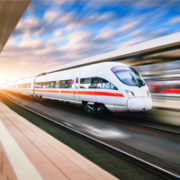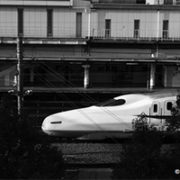Tag Archives | high-speed rail
Transport
 Governance and public sector management, Private sector development, Transport
Governance and public sector management, Private sector development, Transport
 Economics, Transport, Urban development
Economics, Transport, Urban development
 Governance and public sector management, Transport
Governance and public sector management, Transport
 Transport, Urban development
Transport, Urban development
 Transport
Transport
 Industry and trade, Urban development
Industry and trade, Urban development

Facilitating high-speed rail knowledge transfer between Japan and India

High-speed rail training programs can be improved by understanding the differences in education and training styles between countries.
Asian lessons for reviving infrastructure investment as a driver of resilient development

In the post-pandemic era, the need for a timely rebound in infrastructure development is more urgent than ever.
Measuring the economic and social impacts of high-speed rail

The scale of investments in high-speed rail (HSR) raises questions about the most appropriate methods of appraisal. Increasingly the reliance on conventional cost–benefit analysis, based essentially on the direct benefits to users and the direct costs to operators, has been questioned.
Thinking beyond the suitability of high-speed railway in India

In India, the project to build the country’s first 500-kilometer high-speed railway (HSR) from Mumbai to Ahmedabad is underway. For comparison, all top 10 economies in the world except the United States have constructed several HSR lines in the past 30 years. The People’s Republic of China (PRC) alone has built nearly 28,000 kilometers of HSR in the past 20 years. Nevertheless, opinion makers in India are expressing contradicting views, questioning whether it is suitable for the country to develop expensive infrastructure such as HSR.
Delivering safety for high-speed rail

As we are increasingly relying on technical innovations to solve some of society’s most complex problems, technological advancements such as artificial intelligence are contributing to new, modern modes of transportation, especially to enhancing safety. However, technology is only one of many critical factors for safety, and there is a need to understand the other factors.
High-Speed Rail: Necessary but not sufficient for socioeconomic development

Since its inception in Japan in 1964, high-speed rail (HSR), and its impact on the economy, has received attention from policymakers worldwide. Early HSR development was more of a race to go faster, and the early success led policymakers around the world to believe in the power of HSR for catalyzing growth.
High-speed rail investment: A butterfly effect for urban chaos

In 1969, Professor Edward Norton Lorenz coined the term “butterfly effect” to state that subtle changes in conditions can influence or cause seemingly unrelated results elsewhere. The flutter of a butterfly’s wings at place A can eventually develop into a hurricane at place B even though A and B are not related. Almost two decades after the term was coined, Japan National Railways (JNR) was privatized and split into several corporations, and now JR East manages the largest network of railway lines in Japan.


Search
Subscribe / Connect to Asia Pathways
Subjects
- Agriculture and natural resources
- Blog
- Capacity development
- Climate change
- Economics
- Education
- Energy
- Environment
- Finance sector development
- Gender
- Governance and public sector management
- Health
- Industry and trade
- Information and Communications Technology
- Infrastructure
- Miscellaneous
- Population
- Poverty
- Private sector development
- Regional cooperation and integration
- Sanitation
- Social development and protection
- Transport
- Uncategorized
- Urban development
- Video Blog
- Water
Recent Posts
- Transforming ASEAN: Advancing Regional Integration, Social Inclusion, and Environmental Sustainability
- Development of the Creative Economy in Asia and the Pacific
- Kashima City’s Great Transformation: Where Industry Meets Community
- Mechanization Driving the Future of Agriculture in Asia
- Natural Capital: Valuing Nature to Protect and Restore Ecosystem Services for Sustainable Development




Recent Comments